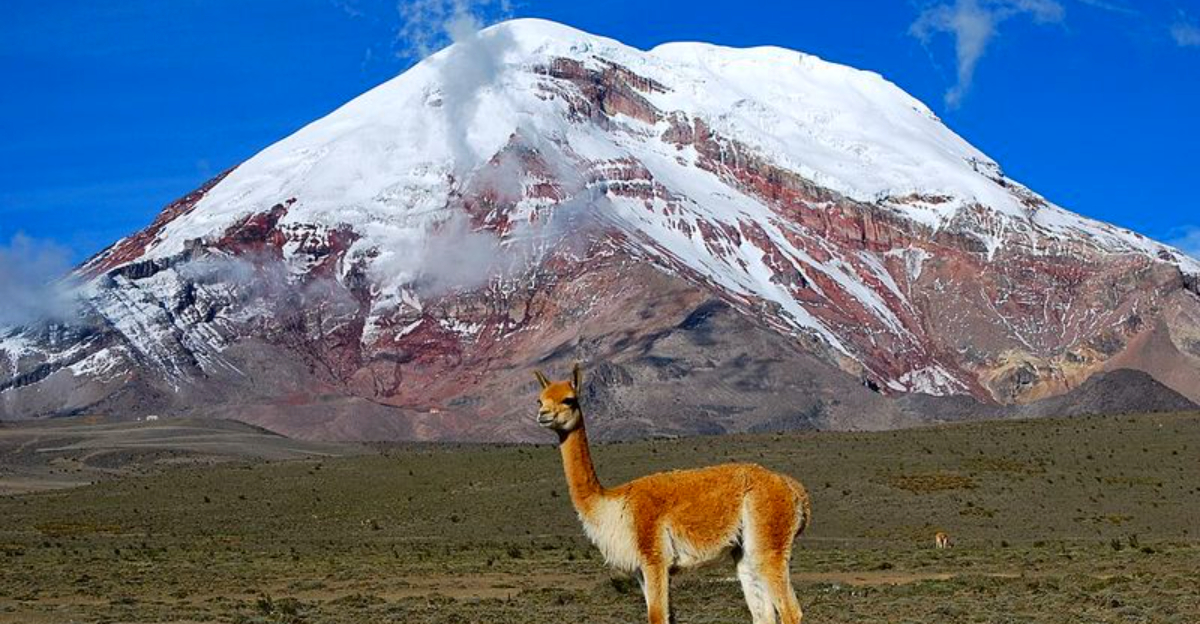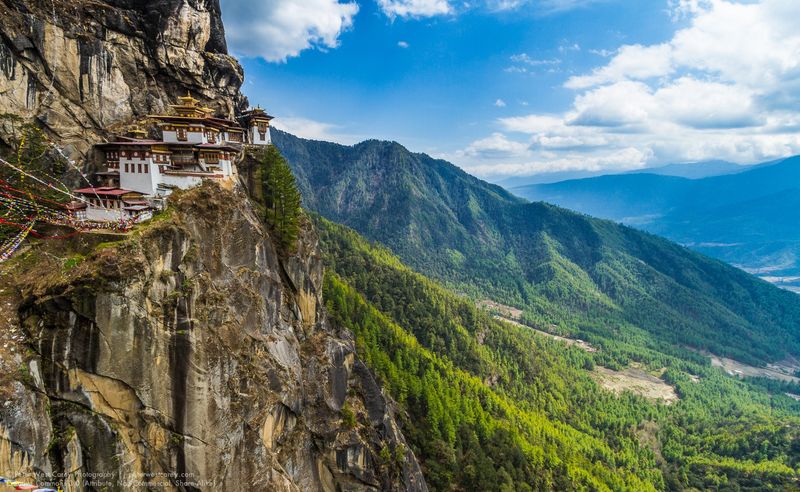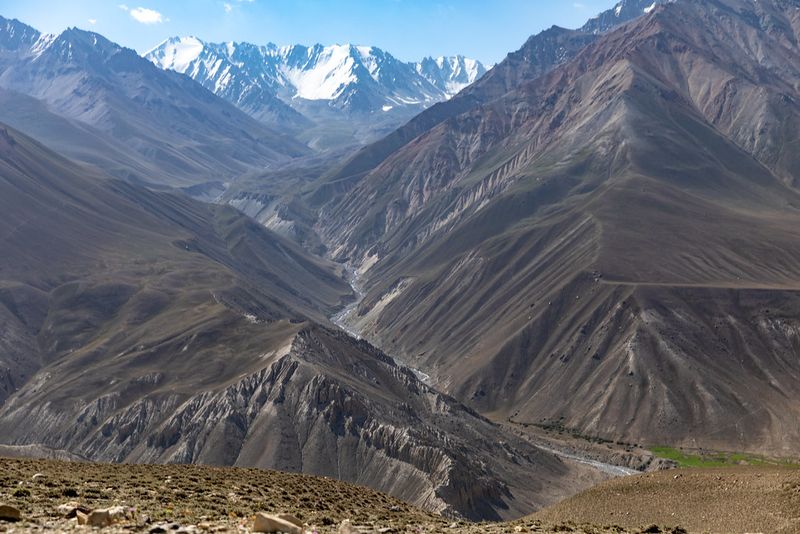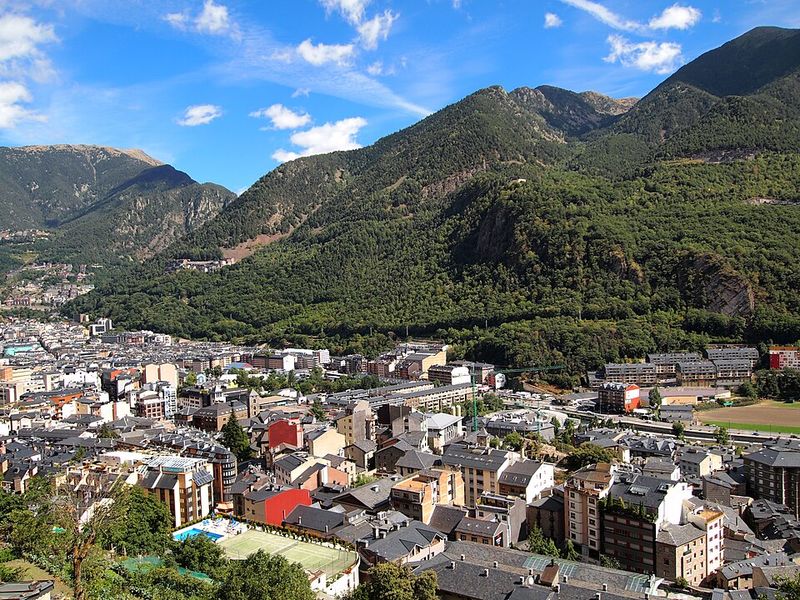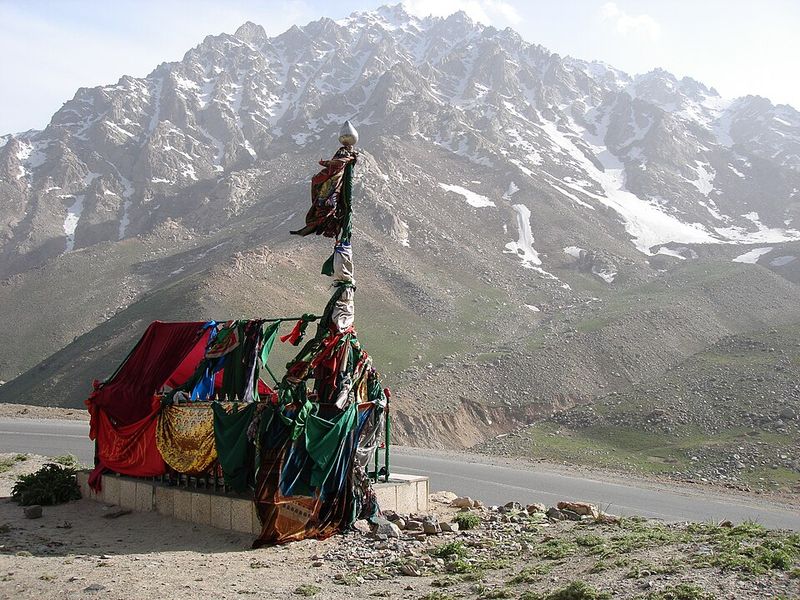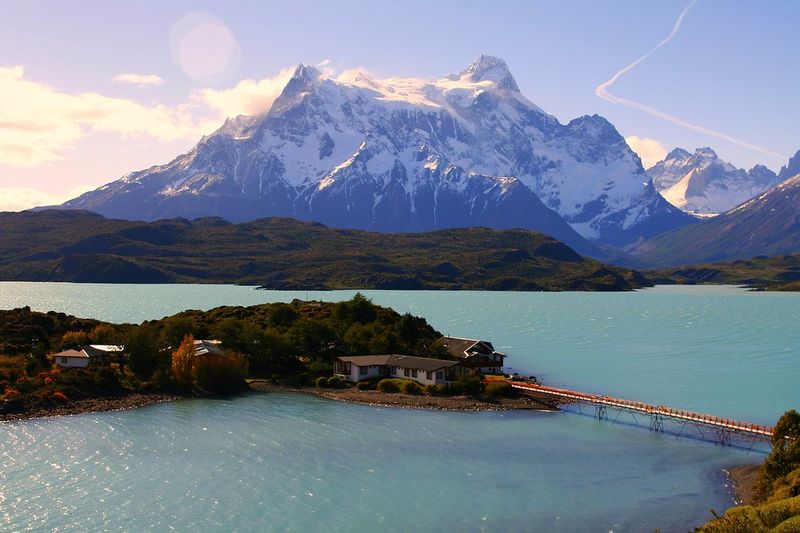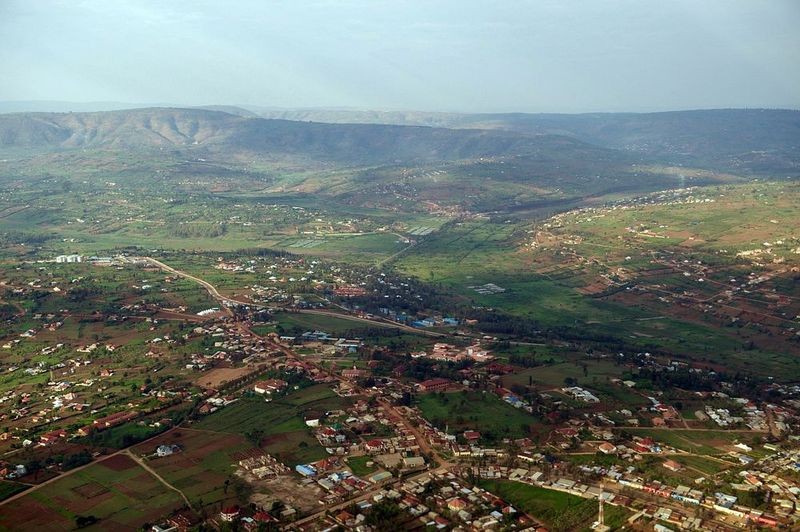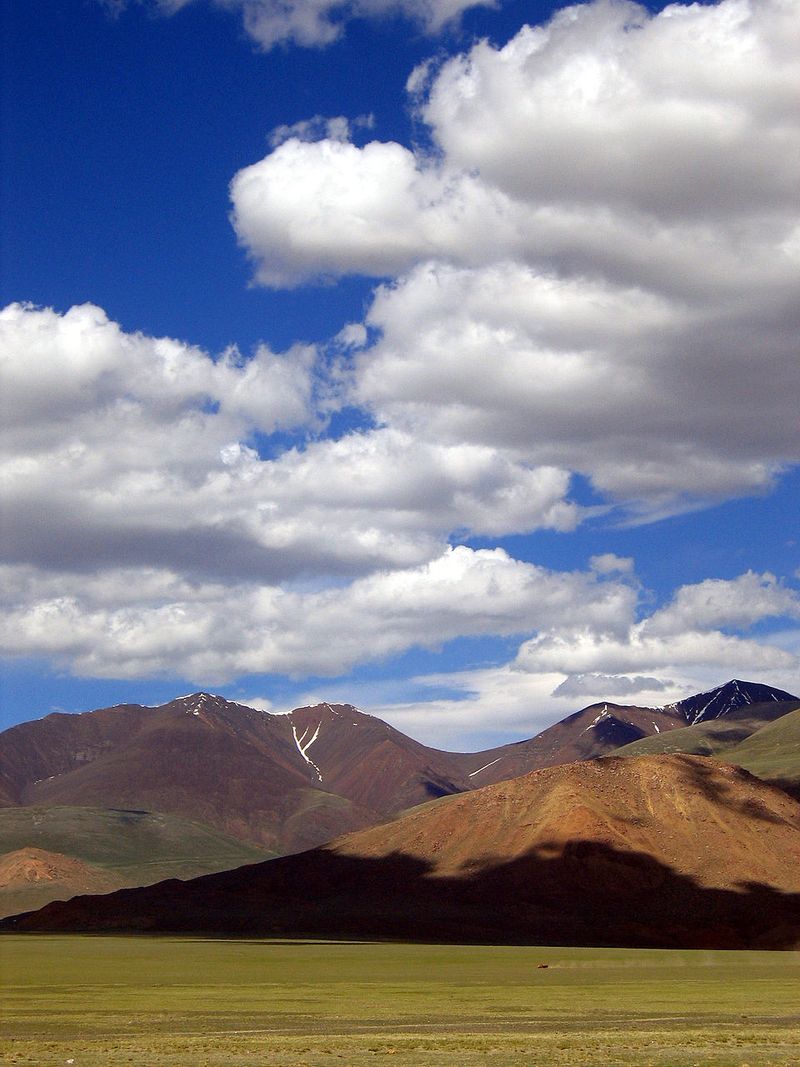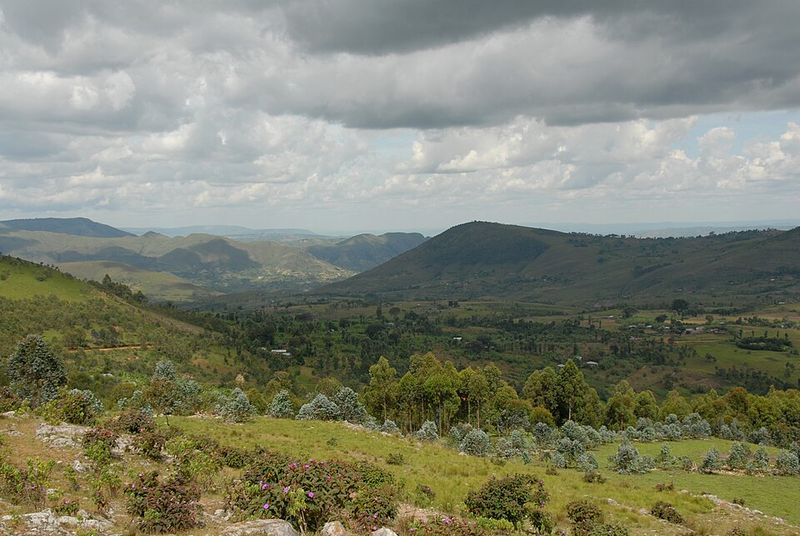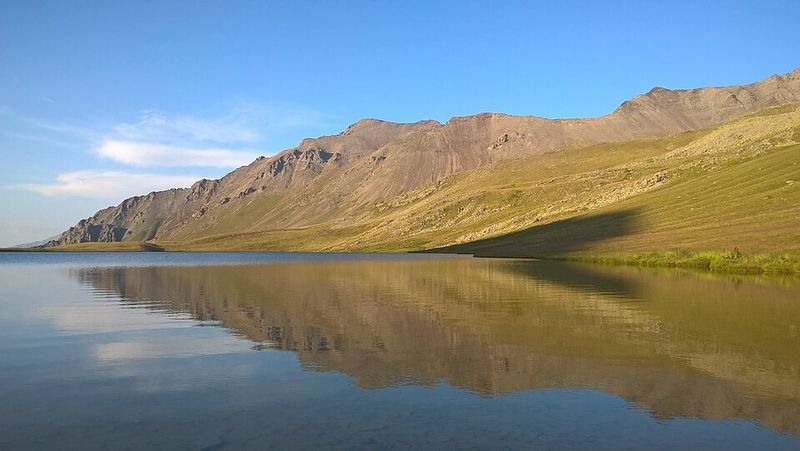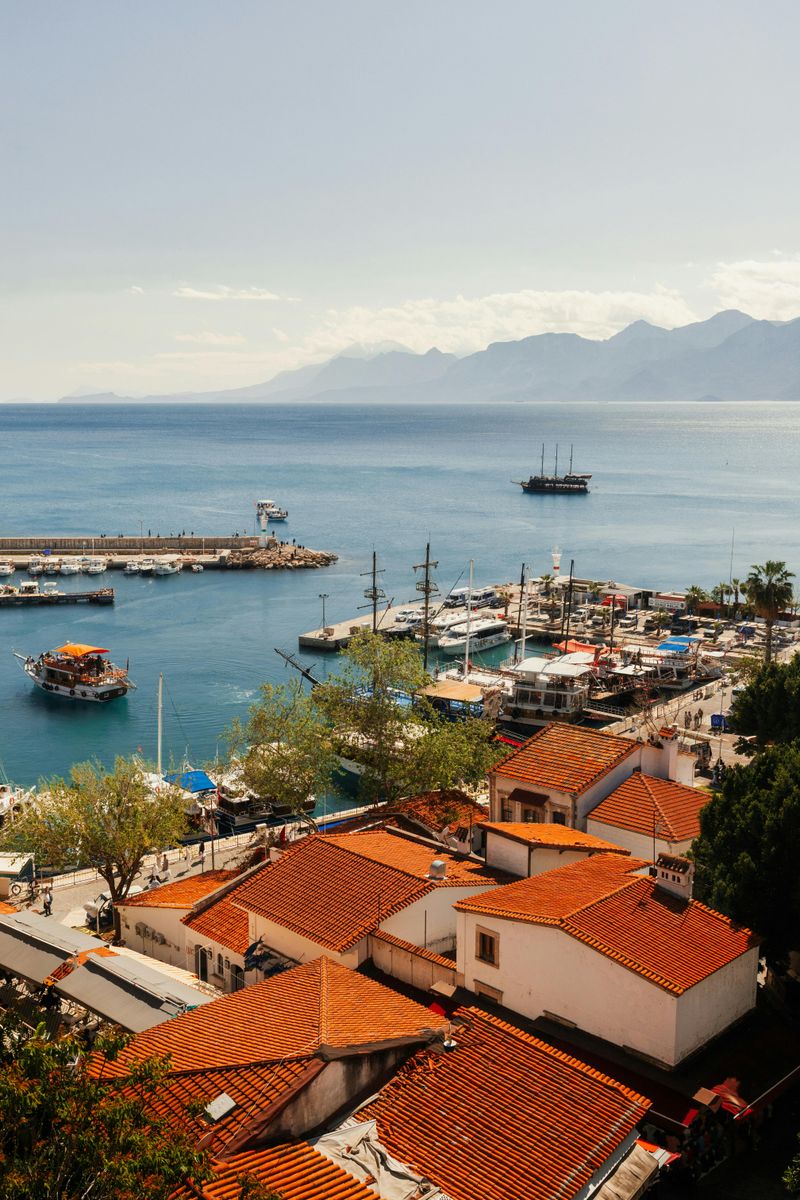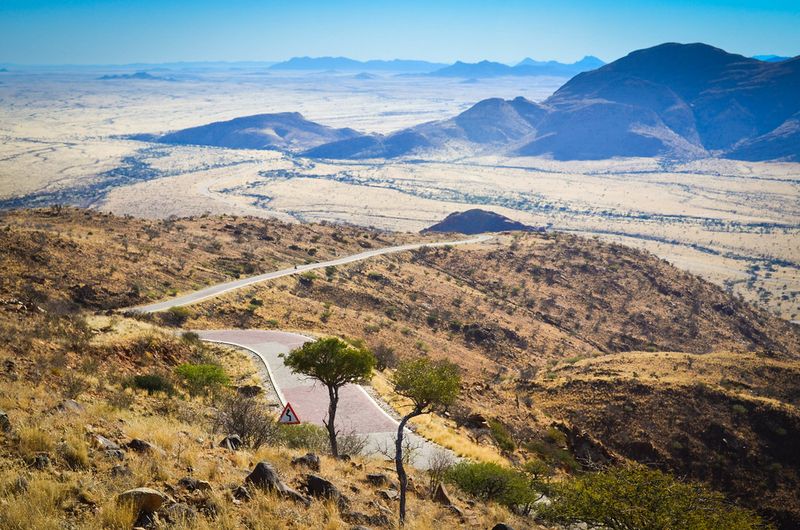Some countries don’t just touch the sky; they live in it. From Himalayan kingdoms to Andean plateaus, entire nations thrive at elevations where clouds skim the ridgelines and the air runs thin. These places shape cultures, architecture, and daily life around altitude itself, forging resilience and breathtaking beauty. Ready to meet the world’s true rooftop societies?
1. Bhutan — 3,280 m
Bhutan rises like a stairway to the sky, its villages knitted into terraces beneath towering Himalayan giants. Life here revolves around sharp seasons, mountain passes, and rivers that tumble from glaciers. Elevation shapes the architecture, with thick-walled homes, steep roofs, and sacred dzongs guarding narrow valleys. Farmers adapt with hardy crops and transhumance traditions. Hiking trails coil through rhododendron forests into windswept yak pastures, where prayer flags snap in thin air. Tourism emphasizes low impact and high reward, echoing Bhutan’s Gross National Happiness ethos. High altitude defines not just geography, but identity, spirituality, and sustainable choices.
2. Nepal — 3,265 m
Nepal’s skyline is a jagged manuscript of ice and rock, written by the world’s loftiest summits. Elevation dictates everything from architecture to agriculture, with terraced hillsides and stone-built settlements adapted to harsh winters. Trails lace the highlands, where Sherpa, Gurung, and other communities maintain trading and mountaineering traditions. Thin air challenges visitors, while locals navigate it with practiced ease. Glacial rivers fuel hydropower and irrigate fields of potatoes and buckwheat. Everest’s aura draws global attention, but countless lesser-known peaks shape daily life. Altitude, culture, and resilience converge, making Nepal a living classroom of high-mountain adaptation.
3. Tajikistan — 3,186 m
Tajikistan rides the backbone of the Pamirs, where high valleys cradle turquoise lakes and sparse villages. The altitude creates a climate of crisp summers and brutal winters, shaping pastoral life around sheep, goats, and yaks. Terraced fields cling to riverbanks, squeezing harvests from thin soils. The Pamir Highway, a marvel of engineering, threads through passes that touch the sky. Here, isolation preserves languages, music, and hospitality traditions tied to mountain survival. Glaciers feed lifelines of water downstream. The air carries a crystalline clarity, and the landscape rewards patience with vast, humbling perspectives forged by height and time.
4. Kyrgyzstan — 2,989 m
Kyrgyzstan is a nation of peaks and pastures, where the Tian Shan rises in serried ranks. Elevation defines seasonal nomadism, with yurts dotting jailoo meadows each summer. Horses remain essential on rugged routes that weave between emerald lakes and icy passes. Villages sit high, adapting insulation and orientation to harsh winters. Alpine agriculture favors hardy grains and livestock, while felt crafts reflect mountain materials. Adventure travelers come for trekking, ski touring, and mountaineering. Despite its ruggedness, hospitality softens the edges. The thin, bright air opens sweeping views that capture Kyrgyz identity: resilient, mobile, and intimately tied to altitude.
5. Lesotho — 2,161 m
Lesotho is entirely a mountain world, perched above 1,000 meters and crowned by the Maloti. Elevation shapes everything: the pony trails, the thatched rondavels, and the hardy crops that withstand frost. Villages sit along ridgelines to capture sun and avoid floods. Winters bring snow, rare in much of southern Africa, while summers turn plateaus green. Basotho culture thrives through blanket crafts, horse culture, and highland music. Dams channel cold rivers into vital water projects. The terrain challenges transport but protects traditions. Living high grants sweeping horizons and a fierce sense of place anchored in altitude and independence.
6. Andorra — 1,996 m
Andorra nestles amid the Pyrenees, where steep valleys carve between granite ridges. Elevation brings snowy winters that feed a thriving ski culture, while summers invite hikers onto flowered slopes. Stone farmhouses and Romanesque churches reveal centuries of highland living. The terrain limits arable land, so trade and services complement pastoral traditions. Mountain passes once guarded independence; today they connect vibrant commercial hubs. Thin air brings clarity and a brisk climate, favoring outdoor pursuits. Though small, the country is layered with trails, lakes, and cirques that express altitude’s character. Life unfolds vertically, climbing from village to pass.
7. Afghanistan — 1,884 m
Afghanistan’s Hindu Kush forms a jagged spine that divides climates, cultures, and livelihoods. Elevation dictates narrow corridors of settlement along rivers and oases. Terraces cling to steep slopes, nurturing wheat, nuts, and hardy fruit under short growing seasons. Mountain passes have long governed trade, migration, and conflict. The thin, dry air preserves stark beauty: blue skies, brown ridges, and snow mantles in winter. Communities adapt with thick-walled compounds and layered clothing against temperature swings. Despite challenges, resilience flourishes in crafts, poetry, and hospitality. Altitude remains both barrier and safeguard, framing daily life within rugged highland realities.
8. Chile — 1,871 m
Chile runs a thousand landscapes tied together by the Andes, a towering backdrop that governs climate and water. High-altitude deserts like the Atacama host observatories under crystal skies, while volcanoes rise above altiplano lakes. Vineyards flourish in valleys fed by Andean meltwater, contrasting with puna grasslands higher up. Communities adapt building styles to seismic and thermal extremes. Mining towns perch in thin air, and llama caravans echo older trade routes. From ski fields to geyser basins, altitude orchestrates an astonishing range of ecosystems. The mountains aren’t just scenery; they are Chile’s spine, reservoir, and celestial window.
9. China — 1,840 m
China’s average elevation is lifted by the immense Tibetan Plateau, a high roof that shapes Asian weather. Thin air and intense sunlight define grasslands where yaks graze beneath glacier-fed peaks. Monasteries crown ridges, and prayer flags color the wind. Rivers born here power downstream civilizations, linking plateau to plains. Infrastructure crosses high passes with tunnels and viaducts, showcasing engineering in rarefied conditions. Agriculture adapts with barley and hardy tubers, while traditional medicine reflects high-mountain knowledge. Altitude is both isolation and identity, sustaining unique cultures and ecosystems. The plateau’s vastness rewrites scale, making the sky feel nearer than earth.
10. Armenia — 1,792 m
Armenia is a land of elevated plateaus and extinct volcanoes, where stone monasteries perch above deep gorges. Elevation shapes a continental climate with crisp winters and luminous summers. Terraced fields support grains, grapes, and apricots, while basalt outcrops form natural fortresses. Mountain roads tie together towns that balance tradition and tech. Springs and alpine lakes feed irrigation networks vital in dry seasons. Cultural identity intertwines with highland resilience, from khachkars to polyphonic song. Views stretch across valleys to snow-touched summits, grounding daily life in altitude. Up here, history feels carved into rock and horizon alike.
11. Rwanda — 1,598 m
Rwanda undulates in endless hills, its elevation moderating equatorial heat into a gentle cool. Terraces step down slopes, turning steep ground into productive farmland for tea, coffee, and bananas. Volcanoes loom to the north, sheltering forests where mountain gorillas roam. Urban growth adapts to relief with tiered neighborhoods and green corridors. Rainfall feeds a mosaic of lakes and wetlands, while erosion control shapes agricultural practice. The altitude encourages walking cities and fresh-climate living. Culture pulses through dance and craft markets. In this highland country, every horizon rolls, and the sky feels close enough to touch each morning.
12. Mongolia — 1,580 m
Mongolia’s high steppes stretch beneath a cathedral of sky, ringed by mountains that hold lingering snow. Elevation brings sharp diurnal swings, encouraging nomadic lifeways centered on livestock. Gers cluster near rivers, their felt skins insulating against cold nights. The air tastes clean and dry, carrying the scent of grass and juniper. Towns space far apart, connected by tracks across open land. Eagle hunters, horse racing, and throat singing embody cultures shaped by space and altitude. Pastures shift with seasons, stewarded through tradition. The land’s amplitude calms and humbles, a high-altitude openness that defines Mongolian identity.
13. Peru — 1,555 m
Peru’s Andean spine carves climates into narrow bands, from coastal deserts to icy peaks. High-altitude cities like Cusco blend ancient stonework with bustling markets, while terraces preserve Inca agricultural genius. Potatoes and quinoa thrive where air thins and nights bite cold. Glacial meltwater nourishes valleys and powers hydroelectric schemes. Trekking routes thread past turquoise lakes into cloud forests clinging to cliffs. Cultural festivals celebrate mountain spirits, weaving altitude into ritual and art. Mining and tourism share the highlands, demanding careful stewardship. In Peru, elevation is both heritage and resource, shaping livelihoods along dramatic vertical gradients.
14. Burundi — 1,504 m
Burundi rests on a high plateau that spills gently toward the Rift Valley shores of Lake Tanganyika. Elevation moderates temperatures, fostering year-round agriculture on small family plots. Hillsides quilted with bananas, beans, and tea descend to rivers that carve fertile bottoms. Villages cluster along ridgelines to catch breezes and avoid floods. The dense rural fabric relies on footpaths knitting communities together. Markets bustle with produce despite challenging soils and erosion risks. Music and dance animate ceremonies that echo across valleys. Life here is paced by hills, rain, and altitude, weaving resilience into daily routines.
15. Georgia — 1,432 m
Georgia’s Caucasus ranges vault abruptly from the Black Sea hinterlands to glaciated summits. High valleys harbor stone towers and villages that winter behind snowed-in passes. Elevation yields sharp climatic contrasts, nurturing vineyards below and alpine pastures above. Roads snake over dramatic passes, linking cuisine, polyphonic song, and hospitality traditions across altitude zones. Trekking and skiing grow alongside shepherding, while monasteries overlook gorges. Glaciers feed rivers that water lowland farms and cities. The high country’s crisp air and bright light sharpen colors, making mountain culture feel immediate and enduring. Altitude shapes both defense and welcome here.
16. Switzerland — 1,350 m
Switzerland is an alpine mosaic where villages perch beneath serrated ridges and blue-green lakes. Elevation organizes life into tiers: dairying and pastures above, vineyards and towns below. Precision railways climb improbable gradients, knitting communities across high passes. Architecture adapts with steep roofs and heavy timbers against snow loads. Tourism shares space with hydropower and careful land management, protecting glaciers and meadows. The air is crisp, the soundscape punctuated by cowbells and avalanches in winter. Cultural diversity mirrors topography, with languages meeting in mountain corridors. Altitude here is engineered into comfort without sacrificing grandeur.
17. Ethiopia — 1,330 m
Ethiopia rises on vast highlands that cool the tropics and cradle ancient civilizations. Elevation shapes teff fields, coffee forests, and pastoral plateaus rimmed by sheer escarpments. Rock-hewn churches anchor spiritual life where cliffs meet sky. Cities like Addis Ababa sit high, breathing thin, dry air that sharpens mornings. Seasonal rains carve gorges feeding the Blue Nile. People adapt with layered clothing, thick-walled homes, and terrace farming to tame erosion. The highlands’ ecology hosts unique species like geladas and walia ibex. Altitude threads through cuisine, ritual, and resilience, making Ethiopia a mountain nation at heart.
18. Iran — 1,305 m
Iran’s mean elevation climbs on the shoulders of the Zagros and Alborz, framing high basins and deserts. Snow from peaks like Damavand feeds qanats and rivers that sustain cities and orchards. Architecture employs courtyards, windcatchers, and thick walls to moderate thermal extremes at altitude. Pastoralists move herds seasonally across upland pastures. The light is crystalline, revealing folded geology and salt flats. Historic caravan routes cross passes that once linked empires. Modern highways follow their logic, threading rugged terrain. Altitude tempers heat, fosters diverse climates, and anchors a cultural landscape tuned to mountains and high plateaus.
19. Lebanon — 1,250 m
Lebanon compresses sea to summit within hours, its average elevation lifted by Mount Lebanon and the Anti-Lebanon. Terraces climb steep hills, nurturing olives, grapes, and apples in cool air. Winters bring snow to ski slopes overlooking the Mediterranean, while summers glow on cedar groves. Villages build in stone to hold heat by night and shed it by day. Mountain springs feed historic towns and vineyards. Passes shape trade and cuisine, blending coastal abundance with highland heartiness. Altitude grants views that stretch from glittering sea to snowy crest, a vertical country in miniature.
20. Bolivia — 1,192 m
Bolivia is sculpted by the Altiplano, a high plateau bracketed by volcanic ranges. Cities like La Paz cascade down canyons, where altitude influences transport, pace, and physiology. Salt flats gleam like mirrors, while lagoons host flamingos beneath razor air. Potatoes and quinoa anchor highland diets, and Aymara rituals honor mountain spirits. Mining towns cling to bleak ridges, their histories bound to ore and elevation. Weather arrives as brilliant sun or sudden icy squalls. The landscape’s austerity is majestic, demanding adaptation in every breath. Altitude defines Bolivia’s drama and daily life alike.
21. Taiwan — 1,150 m
Taiwan’s central mountains lift abruptly from the sea, a serrated spine that breeds microclimates. Trails traverse knife-edge ridges above cloud seas, while tea gardens green cool slopes. Cypress forests cloak high valleys, and rivers plunge through marble gorges. Altitude moderates tropical heat, creating alpine conditions within a compact island. Indigenous communities maintain mountain traditions alongside modern outdoor culture. Engineering carves highways and tunnels through improbable terrain. Typhoons meet peaks to sculpt weather and watersheds. The high country offers rare biodiversity and sweeping vistas, proving how vertical an island can be.
22. Turkey — 1,141 m
Turkey’s average elevation rises across the Anatolian plateau, rimmed by the Taurus and Pontic ranges. High basins host agriculture and ancient trade hubs, while volcanic cones punctuate horizons. Winters bite cold on the plateau, summers bring dry heat, and mountain passes shape movement. Architecture adapts with thick stone and courtyards buffering temperature swings. Lakes and rivers tap snowmelt for irrigation and power. Cultural layers—Hittite to Ottoman—stack across ridgelines and valleys. Altitude connects Black Sea rainforests to continental steppes within a day’s drive. The result is a country of dramatic vertical and cultural variety.
23. Namibia — 1,141 m (tie)
Namibia’s elevated interior plateau rises behind a stark escarpment that drops toward deserts. Altitude cools nights and tempers daytime heat, shaping wildlife movements and pastoral life. Towns cluster along rail and road lines that follow gentler gradients. Inselbergs and dry rivers sculpt the highlands, while fog from the coast meets clear skies inland. Architecture often uses shaded verandas and thick walls to manage thermal swings. The plateau’s openness encourages astronomy, photography, and reflective travel. Despite aridity, altitude creates pockets of productivity and resilient ecosystems. Space and silence define this high country’s character.
24. Zambia — 1,138 m
Zambia’s high plateaus spread wide, their elevation softening tropical heat and nurturing woodlands. Rivers like the Zambezi carve deep gorges and thunder over falls, with uplands feeding powerful watersheds. Farming communities cultivate maize and cassava on gentle slopes, while wildlife roams between parks and communal lands. Roads trace ridgelines to avoid floods, connecting market towns. Altitude shapes a climate of cooler nights and crisp dry seasons. Hydropower and agriculture share the benefits of elevated terrain. The landscape feels expansive yet welcoming, a highland rhythm that sets the pace for work, travel, and celebration.
25. Ecuador — 1,117 m
Ecuador’s Andes split the country into coastal, sierra, and Amazon worlds stacked by altitude. Volcanoes line the Avenue of the Volcanoes, towering above páramo grasses and glacial lagoons. Cities like Quito perch high, blending colonial streets with modern life in thin air. Terraces and greenhouses adapt agriculture to elevation, cultivating potatoes, grains, and flowers. Cloud forests spill down slopes, dripping biodiversity into valleys. Transport slides through high passes into tropical basins, compressing climates within hours. Altitude shapes culture, calendars, and cuisine, from hearty soups to mountain festivals. The sierra’s crisp light frames everyday life.
